Within Flesh and Blood, each class - with the exception of curiosity classes such as Merchant and Bard - has two or more weapons to choose from. Weapons enable strategies and playstyles, so much so that many become intrinsically linked to them. Dorinthea, for example, can choose to brandish her signature weapon, the Dawnblade; but she also has the option to dual wield Cintari Sabers, or resist the arcane with Jubeel. That's without leaving the sword archetype: there are axes and a dagger to consider as well!
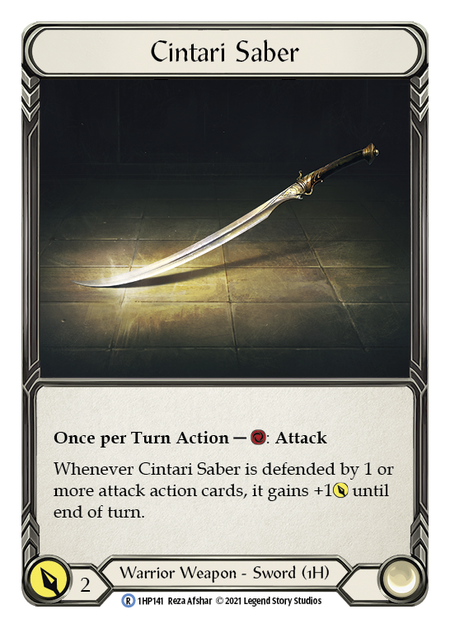
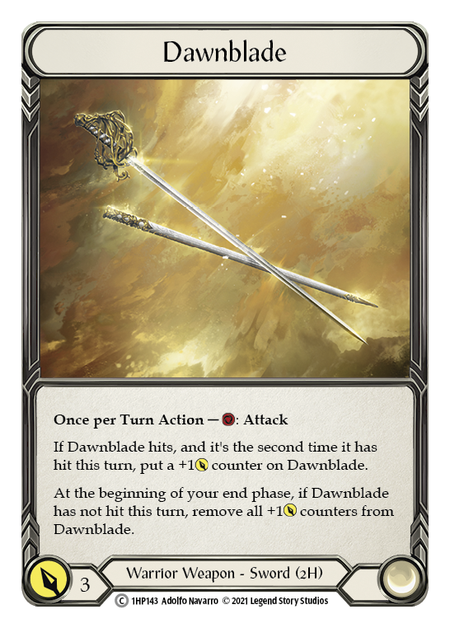
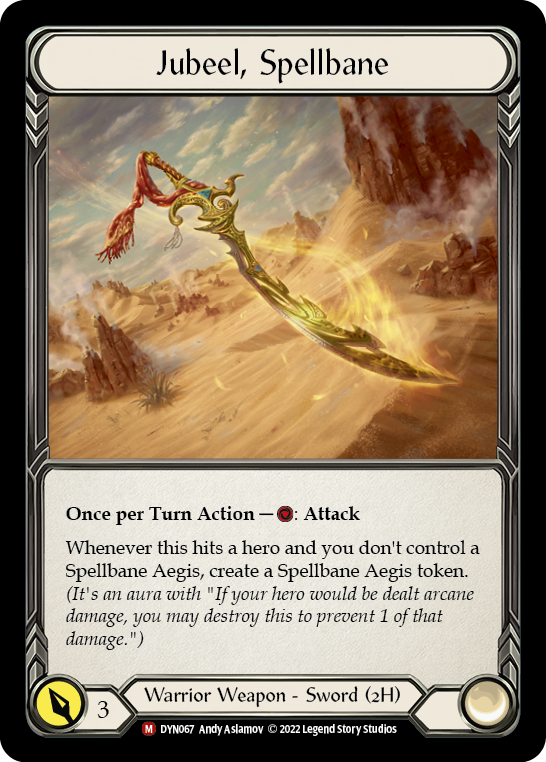
The weapon she reveals at the start of the game signals to the opponent her intent and influences her card pool. Dori favors a sword, but there's growing support for the Hatchets of Body and Mind; and perhaps the Merciless Battleaxe will one day look legit?
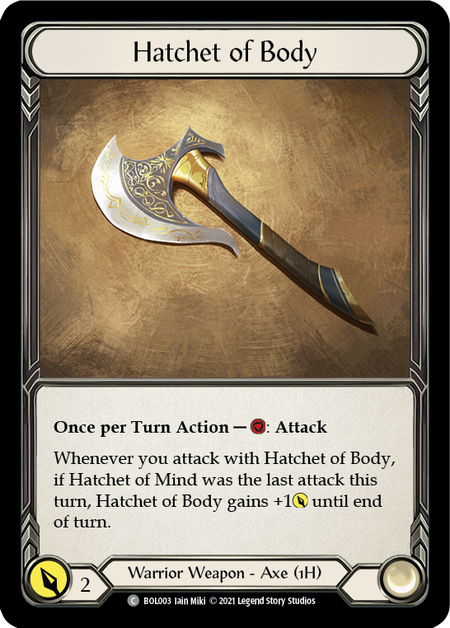
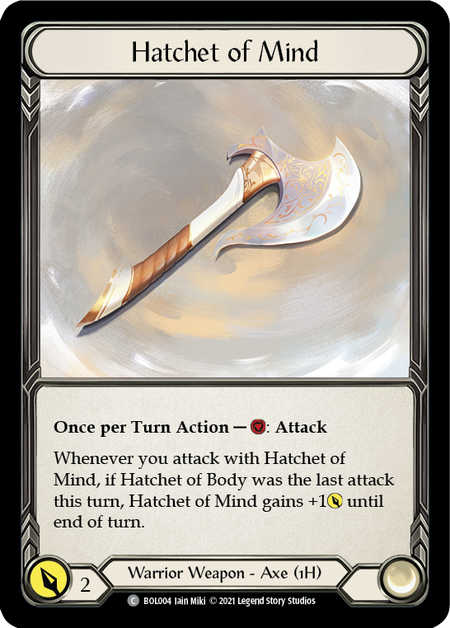
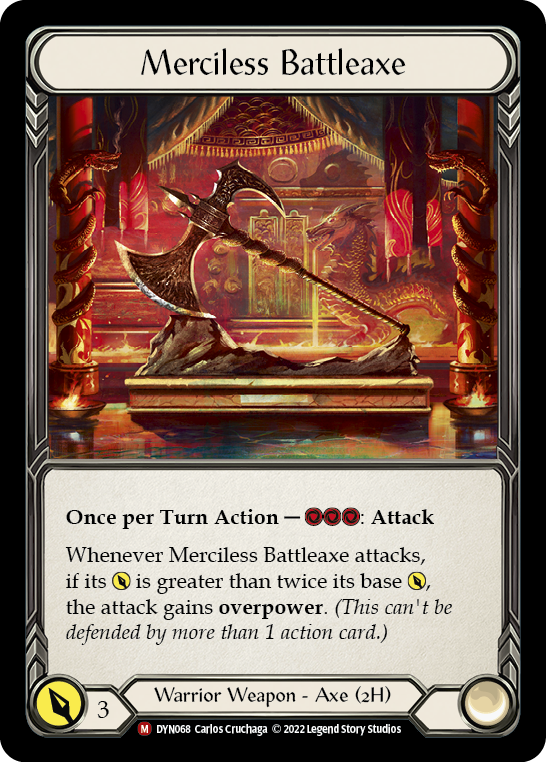
Not every hero is blessed with so many options, however. Case in point: our Draconic Illusionist, Dromai.
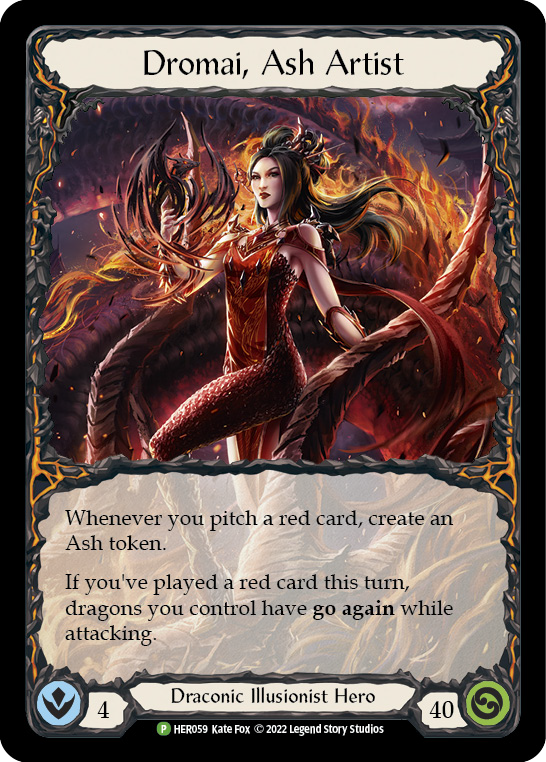
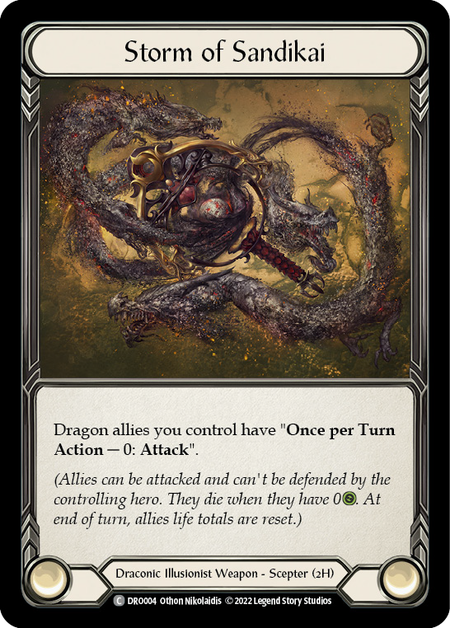
Dragons represent a massive portion of the Draconic Illusionist card pool; and to attack with dragons, you need Storm of Sandikai in hand. Without it, you can make ash, and you can even transform ash into dragons, but you can't make those dragons attack. Dromai has no other option.
Or does she?
On April 1st of this year, I set out to build a list that revolved around what the community considered to be an unplayable pile of Illusionist cards - those built around Ward and Spectral Shields - and tie that to an incompatible hero, Dromai. While that has all the earmarks of a joke, my intent was true.
Today, I present you with the deck I and my friend would have played at the Calling: Baltimore - had my flight not been cancelled. This is Iris of Reality Dromai, and it’s a rogue theory of a deck designed to trick your opponent and succeed in the current meta.
The Deck

Weapons
- Iris of Reality (1)
Equipment
- Crown of Dominion (1)
- Crown of Reflection (1)
- Crown of Providence (1)
- Silent Stilettos (1)
- Wave of Reality (1)
- Nullrune Gloves (1)
- Fyendal's Spring Tunic (1)
- Phantasmal Footsteps (1)
Loadout
- Brothers in Arms (Blue) (3)
- Burn Them All (Red) (3)
- Enigma Chimera (Blue) (3)
- Embermaw Cenipai (Blue) (2)
- Erase Face (Red) (3)
- Imperial Warhorn (Red) (1)
- Coalescence Mirage (Blue) (3)
- Phantasmal Haze (Red) (3)
- Phantasmal Haze (Blue) (3)
- Blessing of Spirits (Red) (3)
- Remembrance (Yellow) (3)
- Phantasmaclasm (Red) (2)
- Fate Foreseen (Red) (3)
- Spectral Rider (Blue) (3)
- Fyendal's Fighting Spirit (Yellow) (3)
- Prismatic Shield (Red) (2)
- Sand Cover (Red) (3)
- Brothers in Arms (Red) (3)
- Passing Mirage (Blue) (1)
- Pierce Reality (Blue) (3)
- Sink Below (Red) (3)
- Unmovable (Blue) (2)
- Shimmers of Silver (Blue) (3)
- Oasis Respite (Red) (3)
- Haze Bending (Blue) (3)
- This Round's on Me (Blue) (1)
- Unmovable (Red) (1)
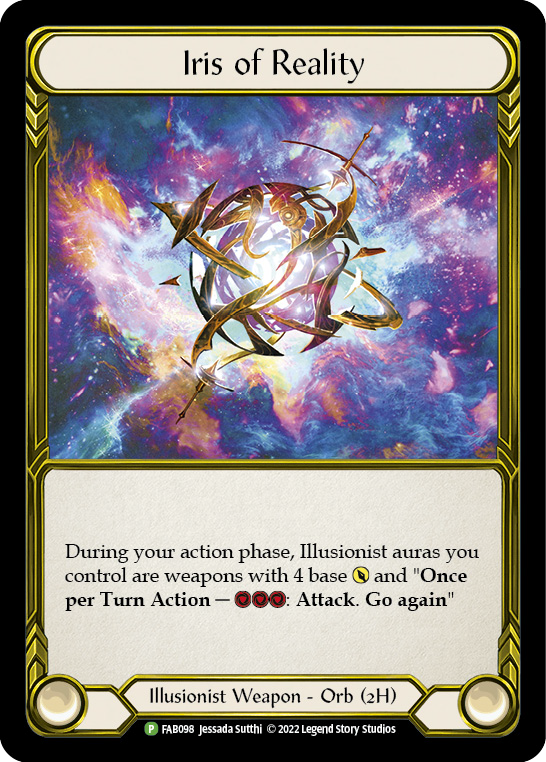
Looking at this list, you’re probably feeling some confusion, but it’s actually simple in practice. Those familiar with Prism should already be noticing similarities in the core. In fact, you might be wondering if this deck solely exists because Prism isn't an option in Classic Constructed. What does Dromai bring to the table?
- Burn Them All,
- Sand Cover,
- and deception.
We'll cover these in reverse order.
Deception comes into play from the very beginning of the game. Dromai is a popular hero with several variants seeing widespread play - but none of them run Iris of Reality. Unless you're repeatedly bringing this deck to your locals, odds are the opponent is going to sideboard incorrectly as your hero is revealed.
When games vs. Dromai go long, arcane damage begins to play a major role; as such, players have learned to slot in Arcane Barrier for the matchup. That's already one important equipment slot they've inefficiently used, as we're not using arcane damage. There's also the high likelihood that they sideboarded for a very different game than the one you're about to give them.
In a manner reminiscent of Aura Prism, Dromai builds a board of Spectral Shields and other auras, then presents attacks for 4 with go again as she pitches blues. You're playing for the late game, when a slowly accumulated wall can ping your opponent down while they slowly fatigue to the high spread of damage. All the while, any attacks directed your way will be blocked out efficiently, with break point damage pings negated by your prevention effects and Spectral Shields.
While that’s the theory, in practice it’s much more difficult to retain several Spectral Shields against decks that tend to go wide and fast. This is why we run the Illusionist spectra auras like Shimmers of Silver, Haze Bending, Pierce Reality, and Passing Mirage.
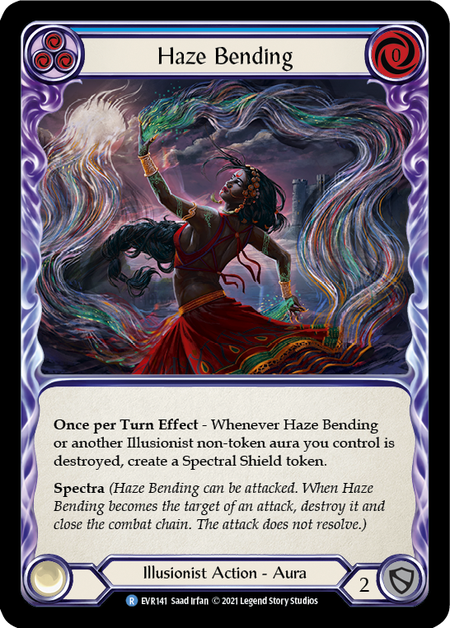
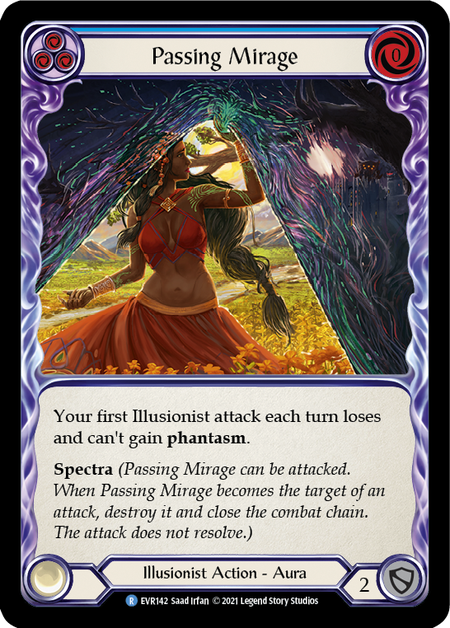
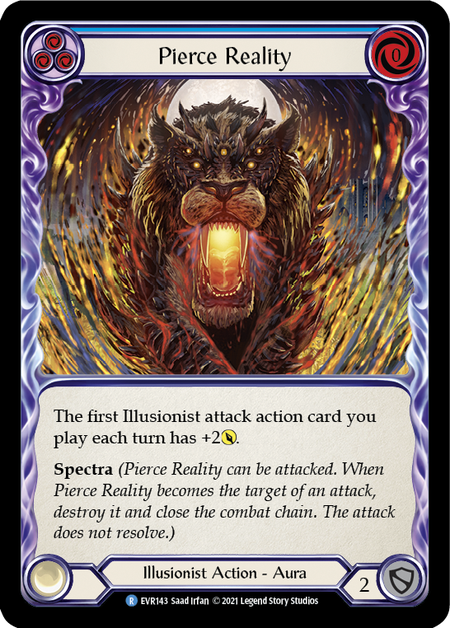
As auras, each of these cards represents a 4-attack weapon; and since these cards all pack spectra, they also act as targets. Attacking the aura destroys the aura, but also ends the combat chain, and any attack into it fails to resolve. Because of this effect, each aura with spectra provides a way to consume your opponent’s attacks, preserve your life total, and set you up to swing tempo back in your favor.
While some decks will ignore these spectra auras, any attempt at your life as opposed to your auras is generally advantageous to you. Shimmers of Silver builds up counters on your aura weapons, causing them to grow in power like Dorinthea's Dawnblade. Pierce Reality enhances the threat of your high-damage Illusionist attacks, until they require answers to stay alive. Haze Bending lets you benefit from your other spectra auras' destruction, as it will net you a Spectral Shield in its place - in essence, retaining your weaponry while increasing your on-board ward value.
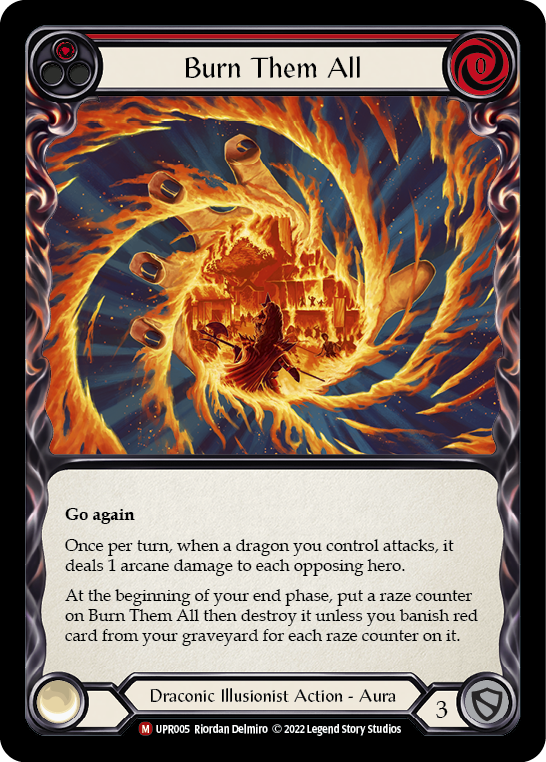
While you may find yourself losing your auras to an aggressive opponent, Dromai’s Burn Them All lets you set the terms for its continuance. An aura with no spectra, Burn acts as a late-game weapon for 4 with go again, and cannot be destroyed by an attack targeting it. You still need to maintain them by banishing reds from your graveyard, but in the late game you'll have plenty available to you. With 3 guaranteed auras on the field, you present three attacks for 12-damage turn every turn. If you can't upkeep all of them, go ahead and let your most expensive Burn fail; Haze Bending will convert it to a Spectral Shield that can still attack and soak up damage.
(Personally, I recommended only banishing a total of 3 cards off any given Burn Them All, so you can maximize the effective time you have one around, while saving the remaining red cards for the final copy left in the deck.)
The deck isn’t always able to set up with its spectra-based auras immediately. Sometimes your opponent strikes them down the second they are played. To help force a board state, the decklist carries cards like Blessing of Spirits, Prismatic Shield, and Phantasmal Haze. Each of these cards produces, or has the chance to produce, Spectral Shields for you. Blessing of Spirits can produce 3 Spectral Shields if it’s allowed to live for a full turn; but it also provides Ward 1, and combos extremely well with Haze Bending. Either you'll block some damage and produce an extra Spectral Shield, or you'll get the 3 you wanted in the first place.
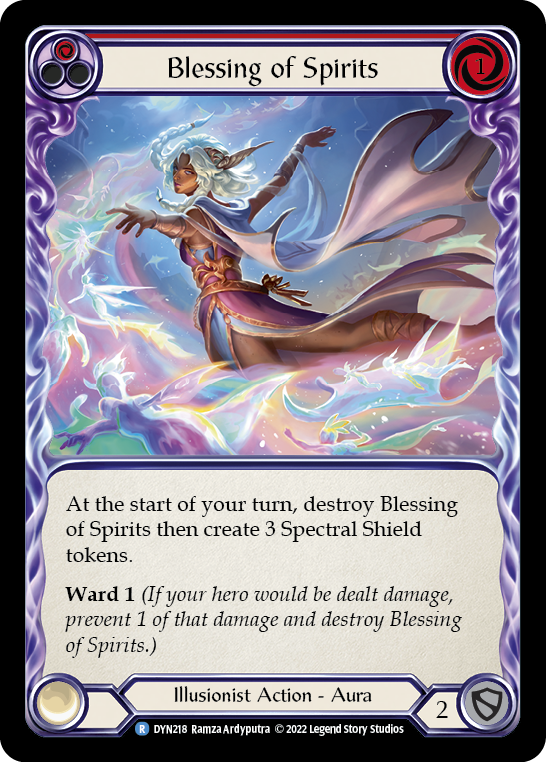
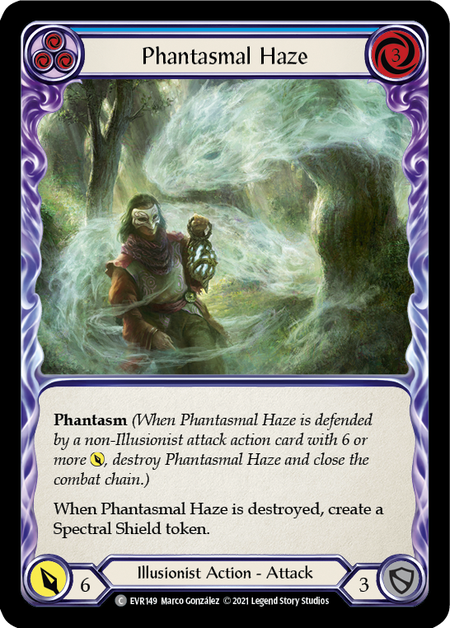
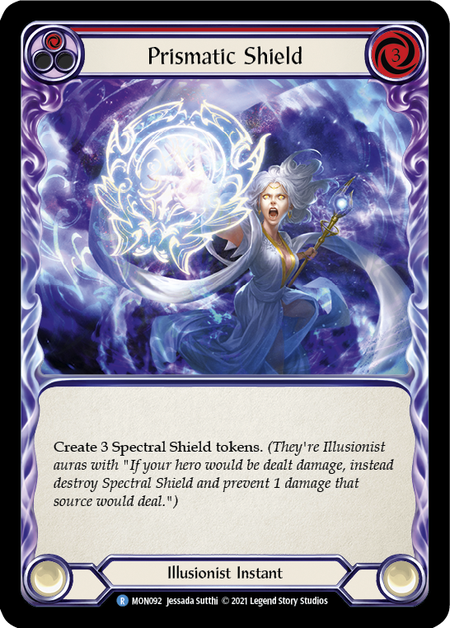
Prismatic Shield allows the deck to punish opponents who make turn 1 plays that lack go again, and nets the deck 3 prevention all while drawing up a full hand. Due to its high attack value, Phantasmal Haze will often demand multiple cards from your opponent's hand; but if they pop it, Haze still provides you with floating protection into the next turn. In the "worst-case scenario", it’s 6 (B) or 8 (R) damage.
While rare, Coalescence Mirage can sometimes set up two auras in the same turn if it gets popped by your opponent's card and you have the resources to produce an extra action point off Phantasmal Footsteps. Because of this, most likely Coalescence will just act as 5 damage - but it’s worth including into Oldhim, Bravo, or Rhinar, heroes that will want to block to preserve their life total but won’t be able to without popping the attack. Similarly, Miraging Metamorph tends to simply be a 7-damage attack, since its popped effect usually ramps your board state beyond what your opponent can tolerate.
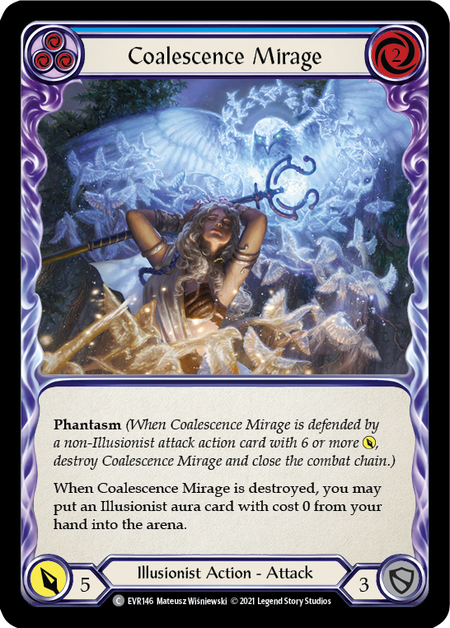
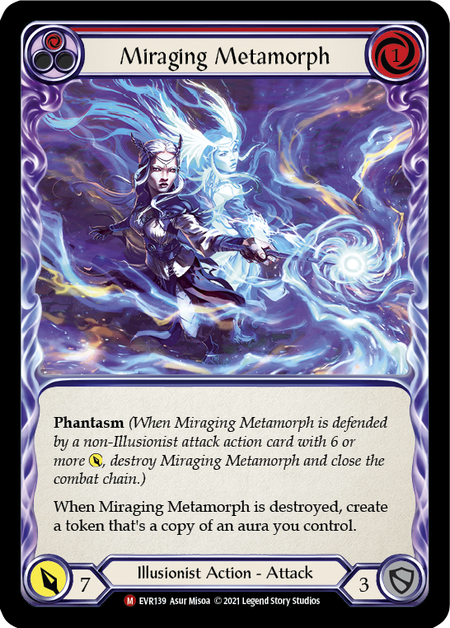
I said that Sand Cover was a key Dromai offering, and here's why: it provides a way to use Dromai’s passive ash generation by turning ash into a Ward 4. This is useful for getting around dominate and pesky on-hit effects that your opponents will attempt to trigger by going wide with multiple attacks. Furthermore, it’s cost value of 0 allows the deck to hold onto its precious resources so that it can throw back big attacks without losing too much life or any spectral shields. Life is a resource, and for a deck that has 6 cards which can block for 4, you’ll find yourself steadily in control of the game.
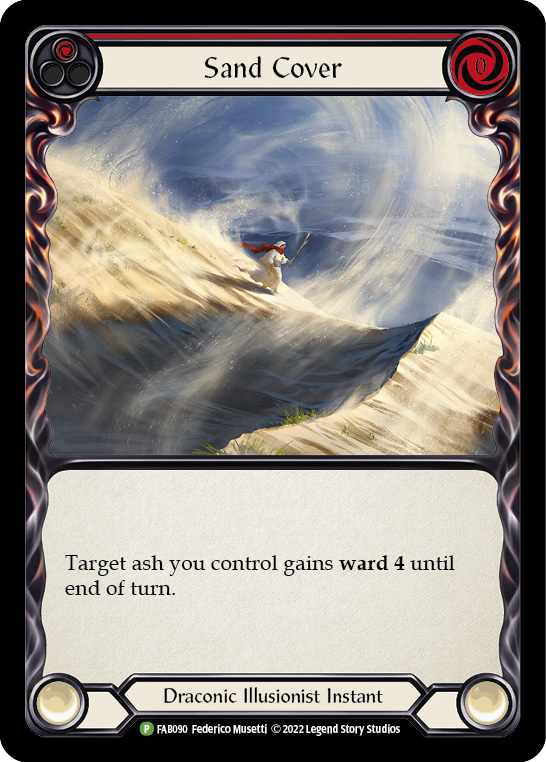
Occasionally you’ll leak damage through your defenses - but when your opponent is out of go again, targets your Spectra-based aura, or has a turn that fails to line up a significant on-hit effect, you can punish them by swinging back with tall attack actions and wide aura swarms. Remember that your weapon attacks don’t cost cards, they just cost pitch; you'll be able to stay late.
Ultimately, this build takes every bit of advantage that the generic Illusionist card pool has at its disposal and utilizes an efficient card economy to make every attack and every block matter. Popping cards with phantasm provides resources and extends plays for the deck, while blocking it out makes your opponent lose 2-3 cards for your one. Your opponent will struggle with your auras and attempt to throw their whole hand to remove them, but it’s you who will control the game regardless of what they do. You can always produce more spectral shields as you cycle back through your deck.
The Looming Threat
While it's certainly cute that Dromai can kill her opponents with Burn Them All but not in the way that they think, what’s truly scary is that every Illusionist that will ever be printed has the capability to essentially run this control-based deck. In truth, Dromai is not the final iteration of this deck, nor is she likely to prove to be the best. She does offer a unique advantage for the time being, but one day she'll pass the mantle of this deck to a more apt Illusionist.
Before You Go, Enter Our Giveaway!
LSS sent content creators a previously unknown promo card - one that encourages the kind of community we'd like to foster. Here's how you can get your hands on a copy.
by: Alex Truell





